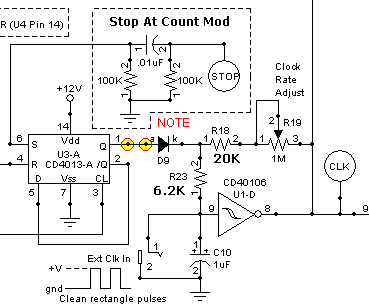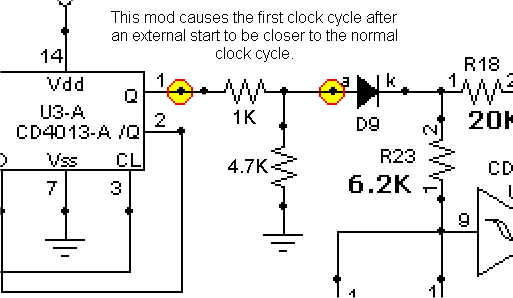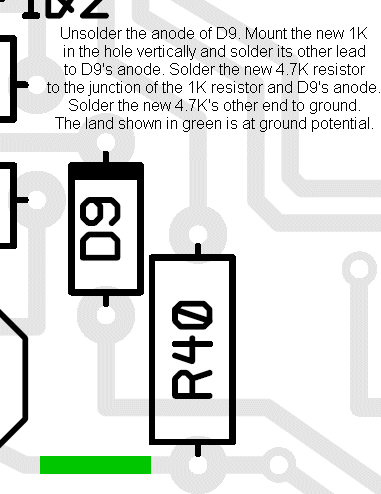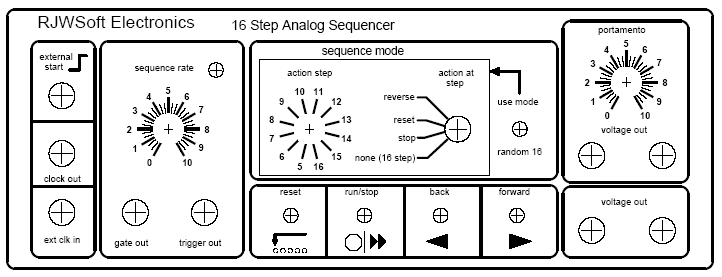Article by Ray Wilson
IntroductionAs soon as I started playing with my sequencer I found that I wanted to be able to start the sequence using the gate of my keyboard. I also found that I needed "Stop At Count" functionality so I could hit a key have the sequence run once and then stop at the terminal count set by the selector switch. This simple modification will enable both functions. Get out the soldering iron and dig in.
Cheers and Good Mod'ing, Ray |
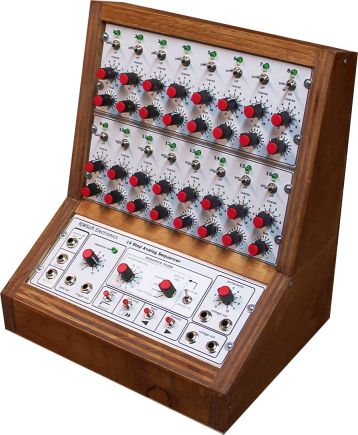 |
Page 1 Modifications Click for PDF
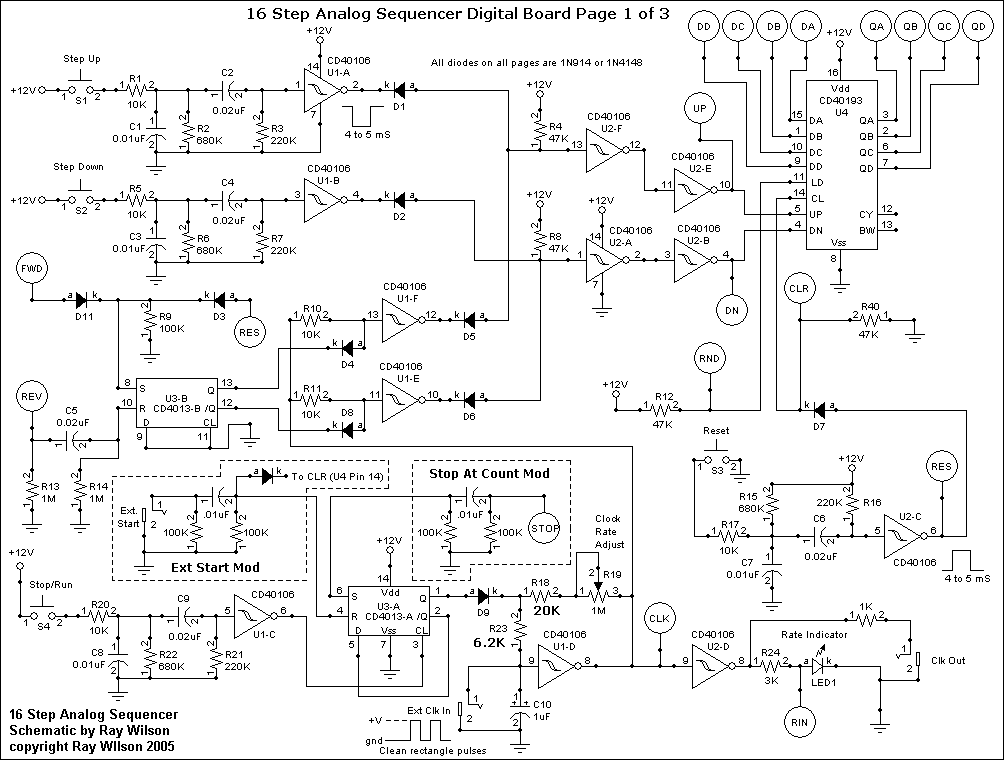
| External Start
By adding a passive differentiator to pin 6 and pin 4 of U3 I now have the ability to pulse either of these inputs to set or reset the CD4013 flip flop. In the case of the "External Start" circuit I connect a jack to the RST pin (U3 pin 4) via the differentiator so that an externally applied rectangular pulse can cause the sequencer to start. When the reset pin is pulsed the Q output of U3-A goes low allowing the internal clock to start oscillating. I also added a diode to steer the pulse to the CL (clear) input of U4 (CD40193 4 bit counter) so that the sequence starts from count zero (sequence position 1) when the external start pulse is applied. |
|||||||
|
Stop at Count I changed the sequence mode switch arrangement from toggles to a selector switch. This is a simpler arrangement although you could add another toggle switch instead to accomplish the necesssary switching. I just thought the toggle switch arrangement was getting out of hand with yet another choice. Anyway... as you can see the selector switch shown on page two steers the logic level at the selected count to either the reverse control, the reset control, or now to the stop control which is fed via the differentiator to pin 6 of U3. The last setting is NC (no connection) so that the sequencer just runs open loop (that is it cycles count 0 to 15 (step 1 to 16) repeatedly).
|
||||||
| To kludge or not to kludge that is the question.
At first I though about cutting some traces on the PC board in order to isolate U3's pin 4 and pin 6 from ground but then I though better of it and decided to kludge. I recommend you do the same thing. Here is a picture of the kludge. This is not hard and not that uncommon. Remove U3 and then carefully bend pins 4 and 6 (of U3) so that they stick straight out from the chip. Then take two 100K resistors and bend their leads so as to be able to fit over the extended pins while sitting on top of the chip. You can use a tacky substance (tack, rubber cement, epoxy, etc.) to secure the resistors to the chip but you don't have to. The other ends of the 100K resistors are soldered together and to a small piece of wire whose other end is soldered to the top part of U3 pin 7. Don't solder too low on U3 pin 7 or U3 won't fit back into its IC socket. If you are nervous about this I recommend you practice on an old chip to get the hang of it. To connect to pins 4 and 6 use thin gauge insulated stranded wire (in the 22 to 24 AWG range). Make a small loop and solder directly to the IC pins (or resistor leads). Look over your work and make sure nothing is shorted. |
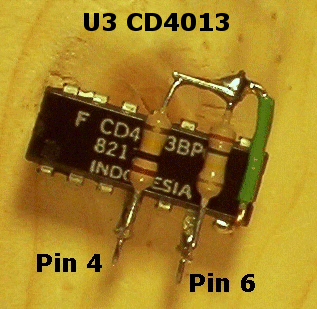 |
||||||
| I mounted the other resistor and cap for both of the SET and RST differentiators on the panel (see "Panel Modifications Electrical" below). I also mounted the diode used to reset U4 on an external start pulse on the panel. As I look at this now you might decide to mount the diode on the kludge. The anode gets connected to pin 4 of U3 and the cathode gets soldered to a wire that goes to the junction of R40, D7's cathode, and pin 14 of U4. The end of R40 shown is probably your best connection point. | 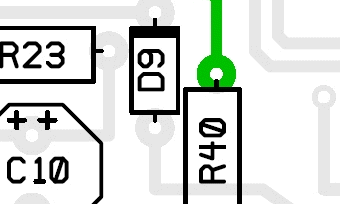 |
||||||
Page 1 Modifications Click for PDF
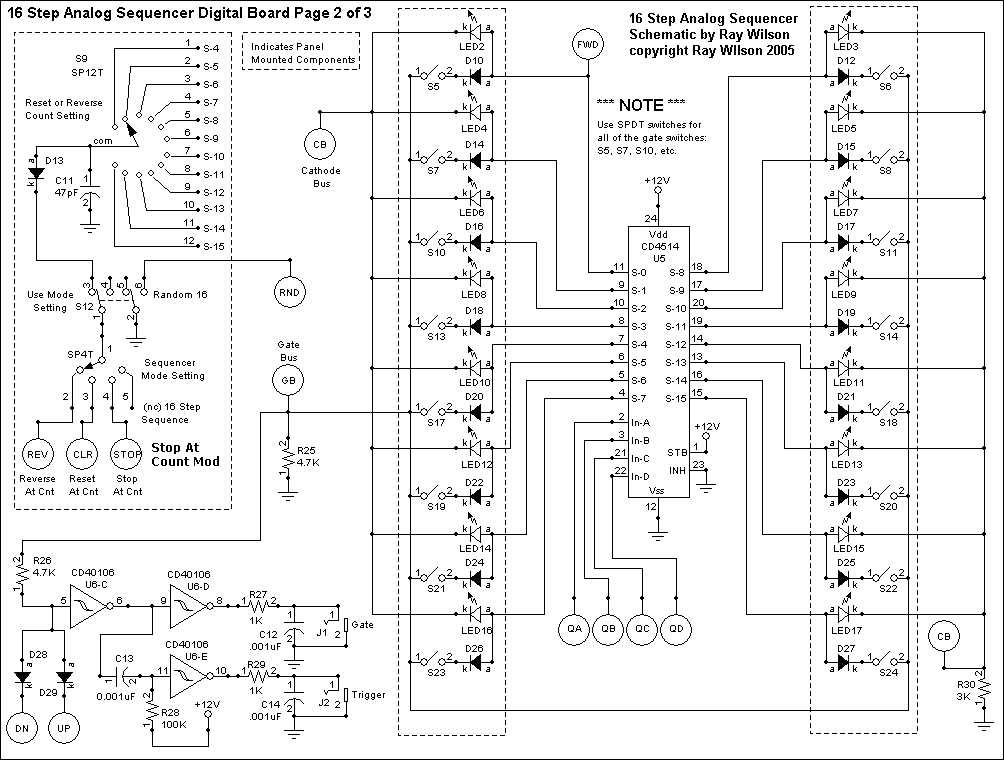
Panel Modifications Electrical Click for PDF
| I used the switching type jack for the external start so I could use the switch terminal as a soldering post only. The jack's switch is not performing a function in the circuit. Remember as I mentioned in the kludge paragraph above you might decide to mount the diode used in the external start circuit on top of U3 instead of here but it won't make a difference to the operation of the circuit. |
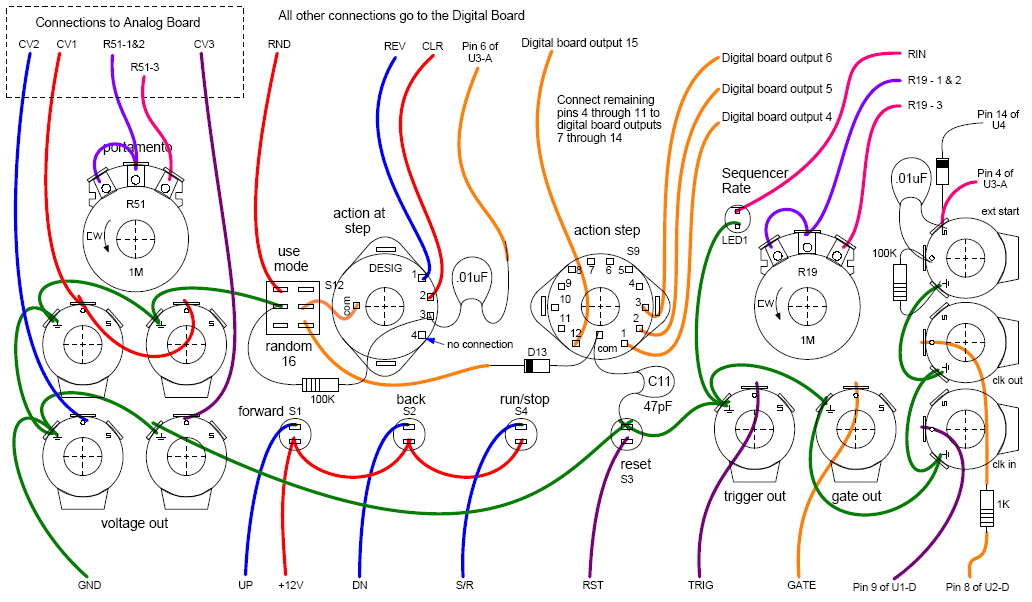
Panel Modifications Template Click for PDF
